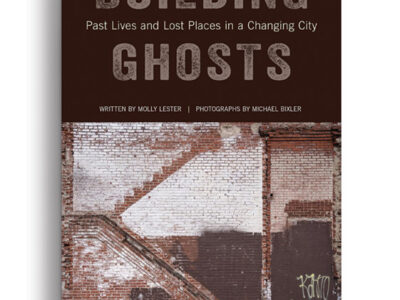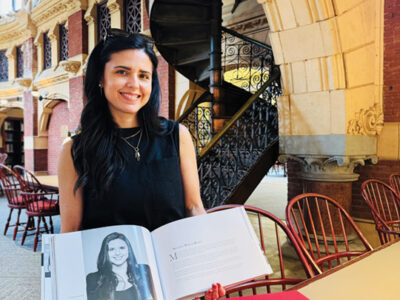
“The best interests of our University demand it shall have in the great city of New York a club, which will equal in dignity, character, equipment and service the clubs of other great universities.” So read an announcement sent to Penn’s New York alumni in 1915, promising that the facility “will give to each of its members a rallying center, a home … with such surroundings that no one will ever feel that he is a stranger in a strange land.”
It took nearly a century, but by June 1994 that mission was accomplished. To celebrate its 10th anniversary this year, the Penn Club of New York is planning two events—a dinner for top donors in May with President Judith Rodin, followed by a reception and party for all club members on June 8.
“It’s been a wonderful 10 years,” says Lynne Tarnopol CW’60, who was the club’s first president when it opened its doors in midtown Manhattan, on 30 West 44th Street. “It was long overdue and we’re very happy we have it.”
For three decades before, alumni in New York had to swallow their pride and use Princeton’s digs. Christopher Browne C’69, the current president, says, “I believe the value of the Penn Club is to give alumni in the New York area an identity, which was always lacking before they had the club. To have a presence [in the city] that’s equal to our peers is very valuable.”
There’s no question of to whom this space belongs. Penn archival photographs hang on each floor, a recasting of R. Tait McKenzie’s “Young Franklin” statue graces the library, and meals in the dining rooms are served on Wedgwood china based on a pattern created for the University in 1929.
“It’s not that you’re walking into a hotel,” says club historian Stephen Marmon C’71 WG’81. “You’re walking into a place that really has the flavor of the University.”
Though the clubhouse is the first to function so fully as a “Penn home away from home,” there have been other gathering places for New York alumni over the decades, according to Marmon. It was over dinner at Delmonico’s restaurant in 1886 that the New York Alumni Society was formed. In 1900 it occupied four rooms of the Royalton Hotel, located just 200 feet west of today’s clubhouse. Five years later it moved to the Hotel Stanley, but eventually gave up that space as well. Then, in the 1920s, it leased two townhouses. These were flush times and membership grew to almost 1,000 by the decade’s end. Alumni gathering there for drinks could get football results reported by “direct telegraph wire.”
Hit hard by the Depression and a drop in membership, Penn alumni went on to occupy at various times the Cornell Club, the Phi Gamma Delta Club, the Biltmore Hotel, and the Princeton Club.
Finally, in 1986, Al Shoemaker W’60 Hon’95, then chair of the trustees, organized a campaign with other alumni leaders to build a place that Penn could call its own. “I think without Al’s leadership it wouldn’t have happened,” Marmon says. “He recognized the critical importance of a New York clubhouse.”
Designed in 1901 for Yale’s use by architects Evarts, Tracy and Egerton Swartwout, the building required extensive restoration as well as attention to some small yet crucial details like changing the engraved letter Y’s (for Yale) running up the grand staircase to P’s.
Dr. George Thomas Gr’75, a historic preservation specialist and lecturer in urban studies at the University, lent his expertise to the project. So did interior decorators Judie (CW’62) and Bennett (W’62) Weinstock, who made trips to campus looking for Penn items to put in the club. One of those objects was a stained-glass window that had been created as a memorial to Samuel Heebner Terry C1906, a Penn track star who died during the week before his graduation. “That was in storage on campus,” Marmon says. “It was an absolutely gorgeous piece of work.” It has a new home in the skylight of the clubhouse library.
Today’s clubhouse features 13 floors with 39 overnight rooms, dining facilities, a business center, and a health club. It has been voted a Platinum Club recipient—a distinction awarded to the top four percent of private city clubs.
Over the past decade it’s been the site for wine tastings, book readings, faculty talks, and even an Abner’s cheesesteaks night. Alumni fans pack the grill room during Quaker football or basketball games to watch the events on satellite feed. “It really brings people together in a great spirit,” Marmon says. “It’s not as good as being at a game, but it’s close.”
Browne cited the banquet operations as another draw. “People have had weddings and bar mitzvahs and bat mitzvahs, all kinds of events there, and we get absolutely rave reviews.”
The club has about 5,000 members. Browne says, “We encourage parents to give a membership as a graduation present so when alumni come to New York and start working, they have a place where they can go meet their friends.”
After all, there’s no sense in being “a stranger in a strange land.”
—S.F.




